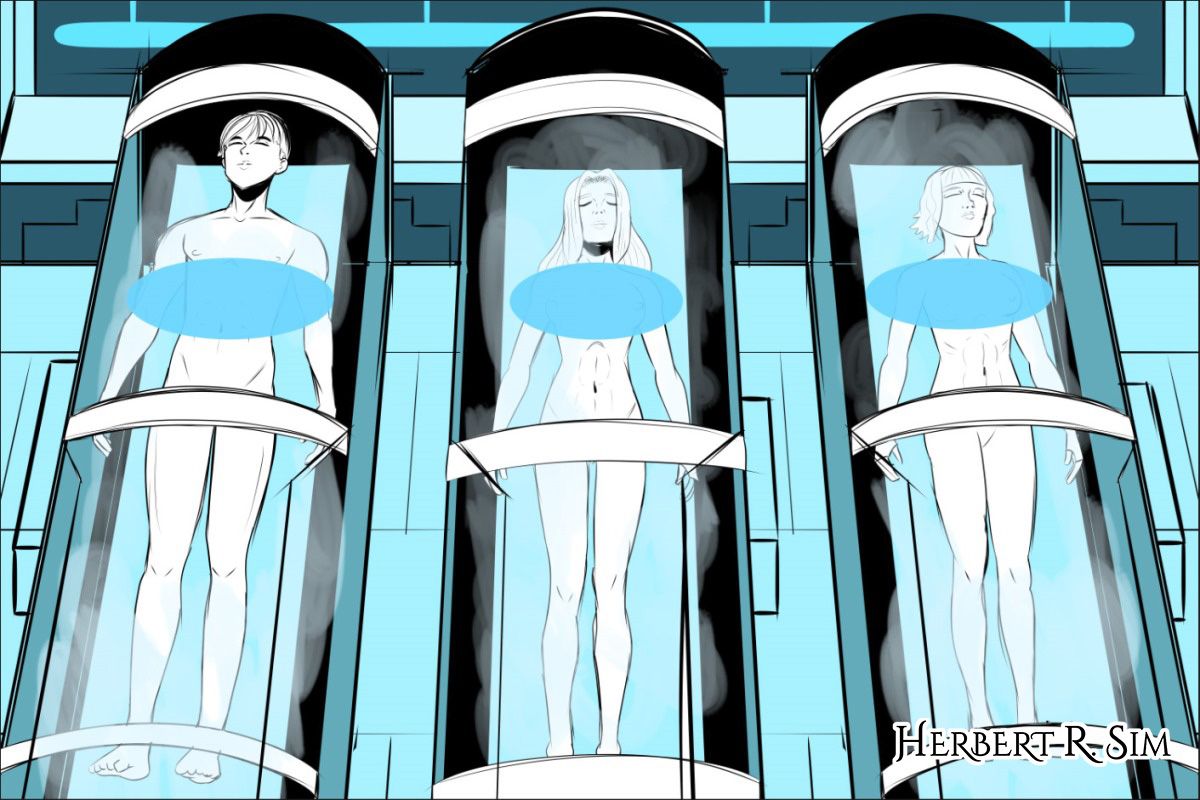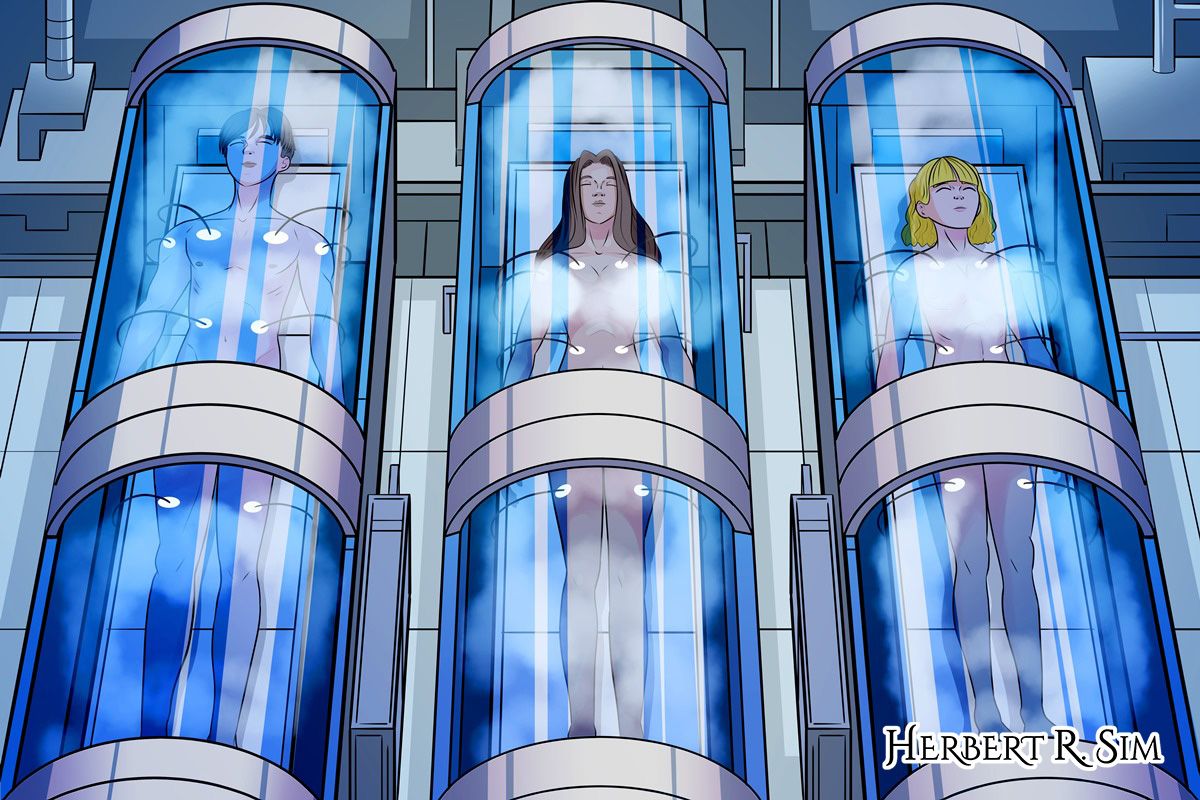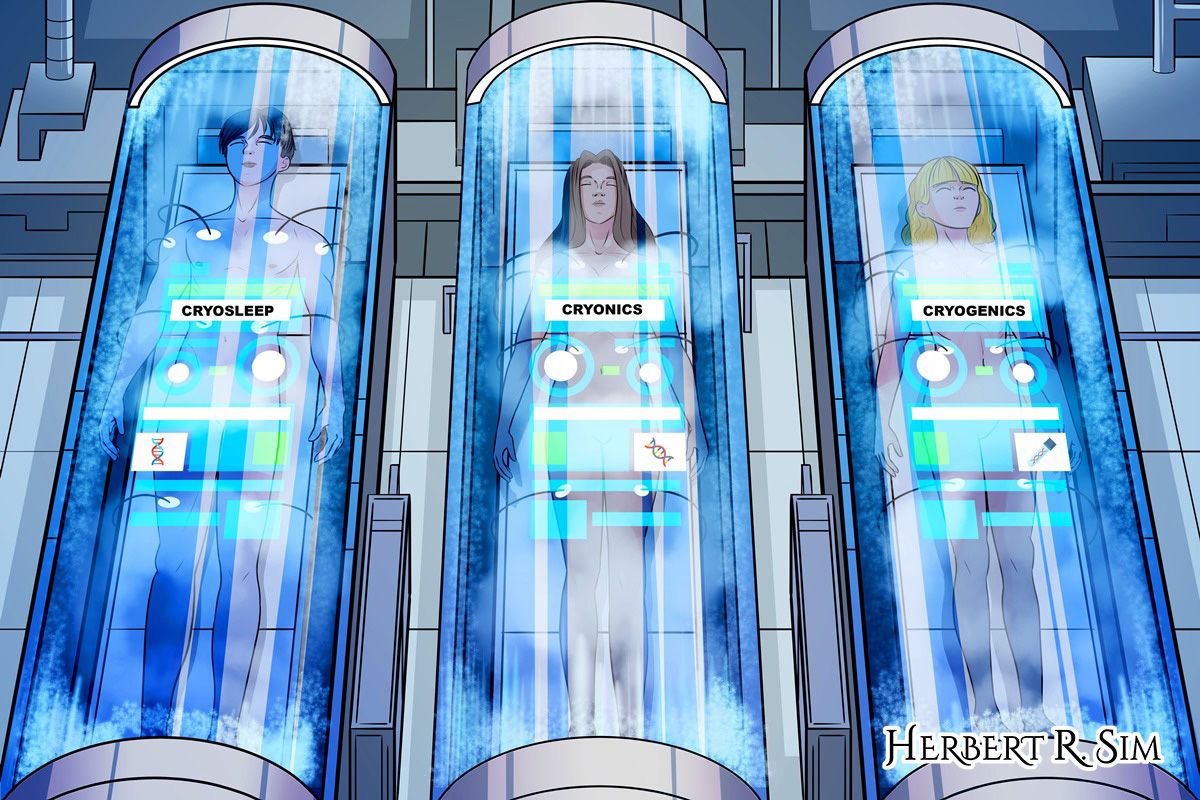
My initial sketch of humans in their Cryosleep, Cryonics pods/capsules.
———————————————-
Sometimes, we marvel at the futuristic technologies that get showcased on the big screen, and perhaps wonder if any of them are real and exists. If this sounds familiar, you’re not alone. One of these technologies, called cryosleep (or cryonics), was depicted in a recent Hollywood blockbuster, Avatar. The film is a perfect example of how fact and fiction can co-exist, combining science and CGI wizardry to tell an exceptional narrative, in the process shining the spotlight on how tangible cryosleep is.
Cryosleep, in simple terms, involves freezing organisms (such as a human being) in extremely low temperatures – typically around -196°C (-320°F). They can be preserved until a specific period when they can then be revived. The idea is that by slowing down the body’s metabolic processes, it is possible to put someone into a kind of “suspended animation” that could potentially extend their lifespan or even bring them back to life in the future. At the moment, cryosleep can only be performed after the pronouncement of the subject’s legal death.
In Avatar, the protagonist Jake Sully and other crew members had to undergo cryosleep in their attempts to travel to Pandora, with the former having clocked around six years of sleep – or essentially, the time required for the journey.
A movement years in the making
While it might sound like something straight out of a sci-fi movie, cryosleep is actually a real concept that has been studied and explored by scientists for many years. Based on the fact that Alcor Life Extension Foundation, a leader in the cryonics field, was founded in 1972, it speaks volumes about the substantial history behind cryonics and the developments that have happened since. The concept of cryosleep is also tied to the term cryopreservation, or the use of extremely low temperatures to preserve structurally intact living cells and tissues – which can be seen as the base to which more advanced techniques are created from.
Successful attempts by scientists to cryopreserve the likes of embryos and sperm, however, does not mean that the technology is risk-free. Ethical and practical considerations persist, as would be expected with the level of risk and the very nature of what cryosleep entails. Fighting the course of nature has often been the battle taken by science, and in a way, cryosleep is no different.
Despite these challenges, there is still substantial interest in cryonics as a way to extend the subject’s lifespan or even achieve immortality. In fact, in the middle of last year, Alcor Life Extension Foundation had on record, 85 patients at that point in time, with a staggering waitlist containing close to 900 living members who have signed up for cryopreservation upon their legal death. Similarly, the Cryonics Institute in Michigan counted more than 90 patients and close to 60 pets, with another 785 living members on the waitlist.
The numbers, naturally, raises the question as to why cryosleep is so appealing. For one, the technology offers the possibility of extending human life beyond what is currently possible. It has become theoretically possible to halt the ageing process and, while not delivering immortality, enable humans to live longer. The lure is in the patients being granted more time to experience life without pain, with the opportunity to receive medical treatments that can treat the diseases or problems that had made them suffer in the first place.
———————————————-

Sketching in more details, you can notice the cold mist in the tanks too.
———————————————-
Risk versus reward: Who’s done it
As with any innovative technology that transcends barriers and pushes boundaries, risks are involved in cryosleep technology. One of the biggest risks, is the irreversible damage rendered to the body’s cells and tissues during the cooling and rewarming process. If the cooling process is not done correctly, ice crystals can form in the body’s cells, which can cause them to rupture. Similarly, the rewarming process must be conducted diligently to avoid damage to the body’s tissues.
The need to mitigate the above concern means there is a constant strive to improve preservation techniques, which led to the idea of vitrification. The vitrification process is designed to prevent ice crystals from destroying delicate tissues when a body gets frozen and vice versa, by replacing blood with a concoction of cryoprotectants, or anti-freeze chemicals. However, while the aim of vitrification is noble, cryoprotectants can be toxic, plus the fact that vitrified human flesh is prone to fracture. It is also illegal to vitrify a person when they are medically alive.
Despite the risks, there are many scientists and proponents who believe that cryosleep could one day become a viable avenue for extending human life. In fact, there are several ongoing research projects that are exploring the potential of cryonics, including the 21st Century Medicine company in California, which is working on developing new cryopreservation techniques.
Indeed, while cryonics may seem like a far-fetched concept, it has already become a reality for some. The first cryopreserved human was James Bedford, a psychology professor who died of kidney cancer in 1967. His body remains cryopreserved to this day, making him the oldest “living” cryonics patient in the world. Other notable figures include baseball legend Ted Williams – whose cryosleep process has met with controversy – as well as British science fiction writer Isaac Asimov.
Is cryosleep just a cold, stale dream?
The future of cryonics may be uncertain, but it is clear that interest in the field is growing rapidly. As medical technology continues to advance, it is possible that cryonics could become a more mainstream option for those who wish to lengthen their lifespan and perhaps, even achieve immortality. However, it is important to weigh the risks and benefits carefully before making a decision about cryonics, as the decision to undergo cryopreservation is a serious one with significant implications.
Arguably, cryonics remains a fascinating technology that continues to charm science fiction writers, Hollywood scriptwriters and the scientific community alike. While the idea of freezing oneself and being revived in the future may seem ridiculous, the proof is indeed in the pudding and tangible examples are on record to show that cryosleep is possible.
Essentially, it boils down to how cryosleep can be rendered ethically and not be abused, as well as how regulated processes can help guide the various stakeholders to ensure that cryopreservation isn’t just for the elite few. The technology could eventually morph into a mainstream option for people who want an extension to their time on earth, who are willing to bank on the advancement of medical technology that could help reverse their physical shortcomings.
———————————————-

